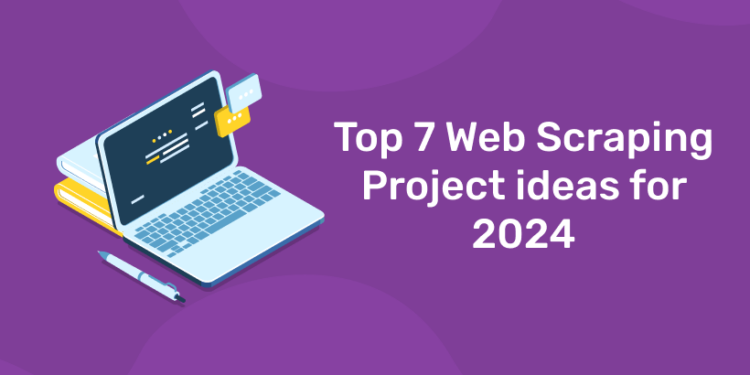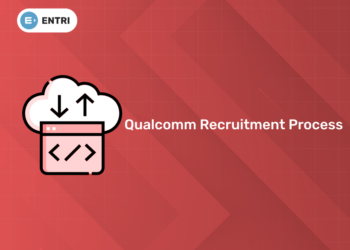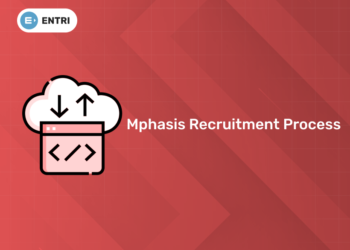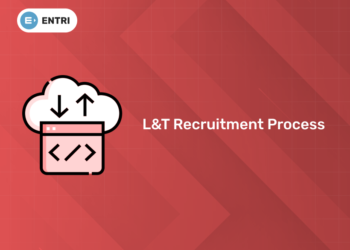Table of Contents
Web scraping – Insight
- It is a nuanced process that unfolds as a symphony of fetching web pages, delving into the intricacies of HTML or XML content, and meticulously extracting the desired information that lies within.
- Beyond being a technical prowess, web scraping has evolved into a versatile tool with multifaceted applications.
- At its core, web scraping is a gateway to a plethora of possibilities, offering insights into a myriad of domains such as data analysis, research, automation, and content aggregation.
- The essence of web scraping lies in its ability to traverse the digital realm, unraveling the complexities of web pages, and bringing forth meaningful data for various purposes.
- As a catalyst for innovation, it has become an indispensable asset for professionals and enthusiasts alike, providing a means to harness the wealth of information that permeates the online sphere.
This technique has proven its mettle as an invaluable resource, facilitating data-driven decision-making, streamlining research processes, automating mundane tasks, and curating content from diverse sources. As the digital landscape continues to evolve, web scraping stands as a dynamic force, adapting to the ever-changing needs of industries and individuals seeking to navigate the vast sea of data available on the web.
Web scraping – Key Components
1: Which of the following data types is immutable in Python?
2: What does the len() function do in Python?
3: Which keyword is used to define a function in Python?
4: What will print(type([1, 2, 3])) output?
5: Which statement is correct about Python indentation?
Ever wondered how much you really know? It's time to put your brain to the test!
HTTP/HTTPS Requests
- Web scraping begins with making HTTP or HTTPS requests to the target website’s servers.
- These requests simulate the behaviour of a web browser, fetching the HTML content of the web pages.
- The initiation of HTTP/HTTPS requests is the inaugural dance between the web scraper and the digital realm it aims to explore.
- It lays the groundwork for the subsequent phases of web scraping, wherein the HTML content is fetched, parsed, and data extraction ensues.
- Understanding this foundational step is essential for mastering the art and science of web scraping, ensuring effective communication between the scraper and the diverse array of websites it encounters.
HTML Parsing
- Once the HTML content is obtained, it needs to be parsed to extract meaningful information.
- This is typically done using parsing libraries or modules like Beautiful Soup (for Python) or Cheerio (for Node.js), which facilitate the navigation and extraction of data from HTML structures.
- HTML parsing is the bridge between obtaining raw HTML content and extracting meaningful information.
- It transforms the web page’s source code into a navigable structure, enabling web scrapers to systematically traverse the DOM tree and gather the data they seek.
- The utilization of parsing libraries streamlines this process, making it more accessible and efficient for developers engaging in web scraping endeavors.
- Understanding HTML parsing is fundamental to harnessing the full potential of web scraping tools and techniques.
Selectors
- Selectors are patterns or expressions used to identify and locate specific elements within the HTML structure.
- CSS selectors or XPath expressions are commonly employed to pinpoint the data of interest, such as headings, paragraphs, tables, or links.
- In the realm of web scraping, selectors are the lighthouse guiding the scraper through the sea of HTML elements, enabling precise navigation and targeted data extraction.
- Whether navigating the simplicity of CSS selectors or the flexibility of XPath expressions, the artful use of selectors enhances the efficiency and effectiveness of web scraping endeavors, making them an indispensable component in the toolkit of a web scraper.
Data Extraction
- With the help of selectors, web scrapers can extract relevant data from the parsed HTML. This can include text content, attributes, or even specific HTML elements.
- The extracted data can then be further processed or saved for analysis.
- In essence, data extraction is the culmination of the web scraping journey, transforming raw HTML into meaningful information that can be harnessed for analysis, research, or automation.
- The finesse with which data is extracted relies on the judicious use of selectors, the adaptability to diverse HTML structures, and the consideration of ethical principles to ensure responsible scraping practices.
- The art of web scraping truly shines in this phase, where the unstructured web is transformed into a trove of valuable data.
Automation Scripts
- Web scraping is often automated using scripts or programs written in programming languages like Python, JavaScript, or Ruby. These scripts send requests, parse HTML, and execute the data extraction logic, making the process efficient and scalable.
- Automation scripts are the architects of the web scraping symphony, orchestrating a harmonious process that transforms raw HTML into valuable data.
- Through the power of scripting languages and well-defined logic, these scripts enable developers to navigate the complexities of the web, extract meaningful insights, and automate tasks at scale.
- The efficiency, scalability, and adaptability of automation scripts make them integral to the success of web scraping endeavors.
 Start Coding Today! Enroll Now with Easy EMI Options.
Start Coding Today! Enroll Now with Easy EMI Options. 

Gain expertise in Django and open doors to lucrative opportunities in web development.
Start Learning With EMI Payment OptionsWeb scraping – Processes
Requesting Web Pages
- The web scraping process begins with sending HTTP requests to the servers hosting the target website.
- The act of requesting web pages serves as the initial handshake between the web scraper and the digital realm.
- It is a meticulous dance of URLs, HTTP methods, and headers that unlocks the door to a treasure trove of digital data.
- The finesse with which web scrapers execute these requests lays the foundation for the subsequent phases of HTML parsing, data extraction, and the overall success of the web scraping endeavor.
- These requests are made to specific URLs, just like a browser would when you visit a website.
Fetching and Parsing HTML
- The server responds to the request with the HTML content of the web page.
- The web scraper then parses this content to understand the structure and identify the data to be extracted.
- The fetching and parsing of HTML constitute the bridge between the raw digital landscape and the structured understanding achieved by the web scraper.
- It is a transformative phase where the unprocessed HTML transforms into a navigable structure, laying the groundwork for precise data extraction in the subsequent stages of the web scraping journey.
Selecting Data with Selectors
- Selectors, such as CSS selectors or XPath expressions, are employed to navigate and locate the HTML elements containing the desired data.
- This step involves identifying the specific elements that hold the information of interest.
- The art of selecting data with selectors epitomizes the precision and finesse required in web scraping.
- These patterns or expressions act as the gateway to the treasure trove of information within the parsed HTML, guiding web scrapers to the specific elements that hold the key to valuable data.
- The mastery of selectors is a hallmark of an adept web scraper, ensuring accurate and resilient data extraction from the dynamic landscape of the web.
Data Extraction and Processing
- The identified data is extracted from the HTML elements and can be further processed based on the requirements.
- For instance, text may be cleaned, numbers may be converted, or additional information may be gathered.
- The extraction and processing phase elevates the web scraping journey from identification to utilization.
- The liberated data undergoes a metamorphosis, shedding its HTML cocoon and emerging as a refined and structured resource ready for analysis, interpretation, or integration into broader applications.
- This final touch, guided by the unique requirements of the scraping project, culminates in the successful extraction of valuable insights from the digital landscape.
Storing or Using the Extracted Data
- The final step involves storing the extracted data for later use, analysis, or presentation.
- Data can be saved in various formats, such as CSV, JSON, databases, or used directly in other applications.
- The closing steps of storing or using the extracted data complete the web scraping lifecycle.
- The liberated insights, meticulously extracted and refined, transition from ephemeral digital snippets to valuable resources poised for application, analysis, and decision-making.
- This seamless integration into broader data ecosystems marks the culmination of the web scraping endeavor, unlocking the latent potential of the digital landscape for informed and strategic insights.
Web scraping – Ethical Considerations
- Web scraping should be conducted ethically and legally. I
- t’s important to review and adhere to the terms of service of the website being scraped, avoid overloading servers with too many requests (to prevent disruption), and respect privacy and copyright laws.
- Ethical considerations in web scraping extend beyond technical proficiency to encompass a commitment to responsible, fair, and transparent practices.
- As web scrapers navigate the intricate web of digital content, approaching the task with integrity and adherence to ethical standards ensures a harmonious coexistence in the dynamic and interconnected online environment.
Web scraping – Project Ideas
Embarking on a web scraping project opens a gateway to a myriad of possibilities, where data becomes the raw material for innovation and insight. Here are seven compelling web scraping project ideas that harness the power of data harvesting to create valuable tools and platforms:
1. Real-Time News Aggregator
Idea: Create a dynamic news aggregator that fetches headlines, articles, and updates in real-time from various news websites. Use web scraping to extract and organize information, presenting users with a centralized platform for staying informed.
- Imagine a user-friendly platform where breaking news, feature articles, and updates from diverse news sources converge in real-time.
- Utilize web scraping to extract data from leading news websites, categorize articles by topic, and present users with a seamless and dynamic news experience.
- Implement features like personalized news feeds, topic-based subscriptions, and real-time notifications to enhance user engagement.
2. Job Market Insights
Idea: Develop a tool that scrapes job postings from popular career websites. Analyze trends, such as the most sought-after skills or industries experiencing growth, providing job seekers with valuable insights.
- Empower job seekers with a comprehensive tool that goes beyond conventional job searches.
- Use web scraping to aggregate job postings, analyze the frequency of specific skills or keywords, and provide users with insights into the ever-evolving job market.
- Implement visualization features like trend graphs, skill demand heatmaps, and industry growth charts to aid users in making informed career decisions.
3. Product Price Tracker
Idea: Build a price tracking application that monitors the prices of products on e-commerce sites. Users can set up alerts for price drops or increases, helping them make informed purchasing decisions.
- Transform online shopping with a price tracking application that leverages web scraping to monitor product prices across various e-commerce platforms.
- Users can track the historical pricing of products, set customized alerts for price fluctuations, and receive notifications when desired price thresholds are reached.
- Enhance the user experience with features like price comparison, product reviews, and historical price trend analysis.
4. Recipe Recommendation Engine
Idea: Scrape cooking websites to build a recipe recommendation engine. Consider user preferences, dietary restrictions, and available ingredients to suggest personalized recipes for users seeking culinary inspiration.
- Culinary enthusiasts often seek new and personalized recipe ideas.
- Utilize web scraping to gather a diverse array of recipes from cooking blogs and websites.
- Implement a recommendation engine that considers user preferences, dietary restrictions, and available ingredients to suggest tailored recipes.
- Enhance the experience with features like meal planning, nutritional information, and user-generated reviews.
5. Social Media Sentiment Analyzer
Idea: Gauge public sentiment on social media platforms by scraping and analyzing comments, reviews, and posts. This tool can provide insights into trends, brand perception, and emerging topics.
- Harness the power of web scraping to analyze the sentiment expressed on social media platforms.
- Collect and process comments, reviews, and posts related to specific topics, brands, or events.
- Implement sentiment analysis algorithms to gauge public opinion, identify trends, and offer insights into brand perception.
- Provide users with visually intuitive dashboards, sentiment heatmaps, and customizable filters to explore the vast landscape of social media sentiment.
6. Weather Data Analysis
Idea: Create a weather data analysis tool by scraping weather forecasts from various sources. Generate historical weather trends, analyze patterns, and provide users with detailed insights into local or global weather conditions.
- Elevate weather forecasting beyond standard applications by building a tool that harnesses web scraping to gather data from diverse weather sources.
- Analyze historical weather trends, identify patterns, and offer users detailed insights into local or global weather conditions.
- Implement features like customizable weather alerts, interactive weather maps, and long-term trend predictions to cater to the diverse needs of users.
7. Book Review Aggregator
Idea: Build a platform that aggregates book reviews from multiple sources, including blogs, forums, and review sites. Users can explore comprehensive book summaries and ratings to make informed reading choices.
- Empower book enthusiasts with a centralized platform that amalgamates book reviews from various corners of the internet.
- Utilize web scraping to extract reviews from blogs, forums, and reputable review sites. Provide users with a comprehensive database of book summaries, ratings, and user-generated reviews.
- Implement features like personalized reading lists, genre-based recommendations, and integration with e-book platforms to create a holistic reading experience.
- Embarking on these web scraping projects not only showcases the technical prowess of developers but also addresses real-world needs, transforming raw data into valuable insights for users across diverse domains.
| Explore These High Demanded Courses | ||
| Data Science Course | Online Python Programming Course | full stack developer training |
 Start Coding Today! Enroll Now with Easy EMI Options.
Start Coding Today! Enroll Now with Easy EMI Options. 

Gain expertise in Django and open doors to lucrative opportunities in web development.
Start Learning With EMI Payment OptionsWeb scraping – Tips
Respect Terms of Service:
- Understanding ToS: Thoroughly read and comprehend the terms of service (ToS) of each website you intend to scrape. These legal agreements outline the rules and permissions associated with using the site’s services.
- Compliance with Access Policies: Align your scraping practices with the access policies stipulated in the ToS. Some sites may encourage scraping for specific purposes, while others may explicitly prohibit automated access.
- Robots.txt Protocol: Respect the directives in the
robots.txtfile, which communicates which parts of the site are open for crawling and which should be avoided.
Use Ethical Practices:
- Avoid Overloading Servers: Implement throttling and rate-limiting mechanisms to control the pace of your requests. Overloading servers with excessive requests can disrupt services for other users and may trigger defensive measures from the website, such as IP blocking.
Data Privacy:
- Handle Data Responsibly: Treat scraped data with care and responsibility. Avoid collecting personally identifiable information (PII) without explicit consent, and handle sensitive data in compliance with data protection regulations.
- Legal Compliance: Ensure that your scraping activities adhere to privacy laws and standards. Violating data protection regulations can have legal consequences and harm your reputation.
Thorough Documentation:
- Document Your Scraping Processes: Maintain detailed documentation of your scraping processes, including the websites scraped, frequency of requests, and the specific data extracted. This documentation can serve as a reference in case of inquiries or audits.
Regular Monitoring:
- Monitor for Changes: Websites may update their terms of service or implement changes that affect scraping conditions. Regularly monitor for alterations and adapt your scraping practices accordingly to ensure ongoing compliance.
Seek Permission for Sensitive Data:
- Explicit Consent: If your scraping involves extracting sensitive data or PII, seek explicit permission from the website owner or users. Adhering to explicit consent protocols is essential for ethical data handling.
Legal and Reputational Awareness:
- Understand Legal Consequences: Be aware of the legal consequences of non-compliance with terms of service and data protection regulations. Legal action and reputational damage can result from unethical or unlawful scraping practices.
Educate Your Team:
- Promote Ethical Practices: If you’re working in a team or organizational setting, educate all team members about the importance of ethical scraping practices. Foster a culture of compliance and responsible data extraction.
Test in Development Environments:
- Develop in Test Environments: Before deploying your scraping tools in a live environment, test them in controlled, development environments. This helps identify and address potential issues before engaging with production websites.
Stay Informed:
- Stay Updated on Legal Landscape: Stay informed about changes in legal landscapes, especially regarding data protection and web scraping regulations. Regularly review and update your practices to align with evolving standards.
Web scraping – Conclusion
In the dynamic landscape of 2024, where data is both the currency and the canvas, your web scraping journey is an invitation to paint with the colors of innovation, curiosity, and purpose. Embarking on a web scraping project in 2024 is akin to opening a door to a vast digital landscape teeming with opportunities for innovation and insight. As you step into this realm, fueled by curiosity and the desire to harness the power of data, it’s essential to consider projects aligned with your interests and goals.
The journey of web scraping is not merely a technical endeavor; it’s an exploration of creativity and innovation, offering a canvas where ideas can be transformed into tangible applications. As we conclude this exploration into the realm of web scraping, remember that your journey is uniquely yours. Each project you undertake adds a brushstroke to your canvas of experiences. So, choose your path, embrace the challenges, and revel in the joy of transforming data into knowledge. The digital landscape is vast, and your foray into web scraping is a chapter waiting to be written—full of possibilities and discoveries.









